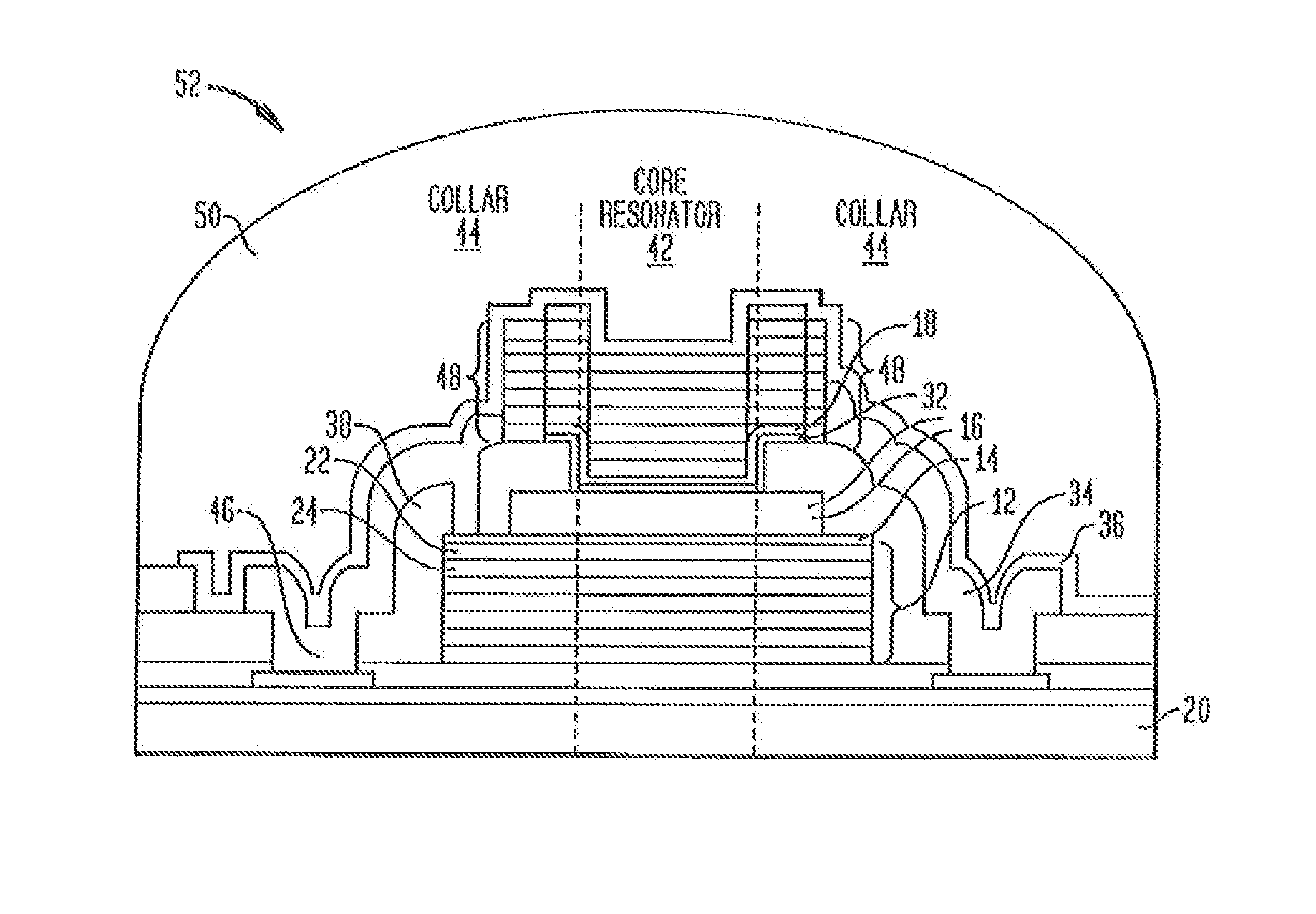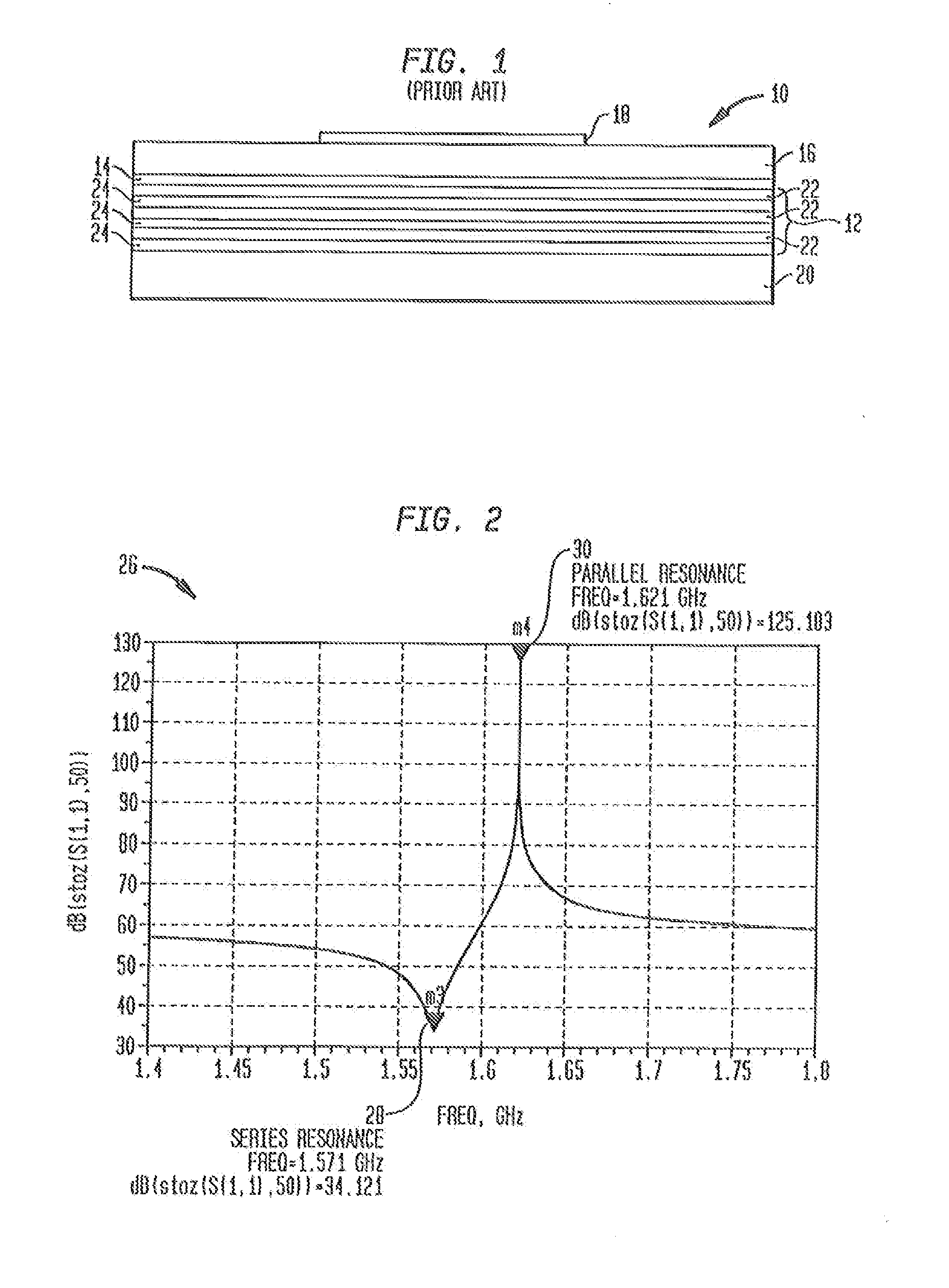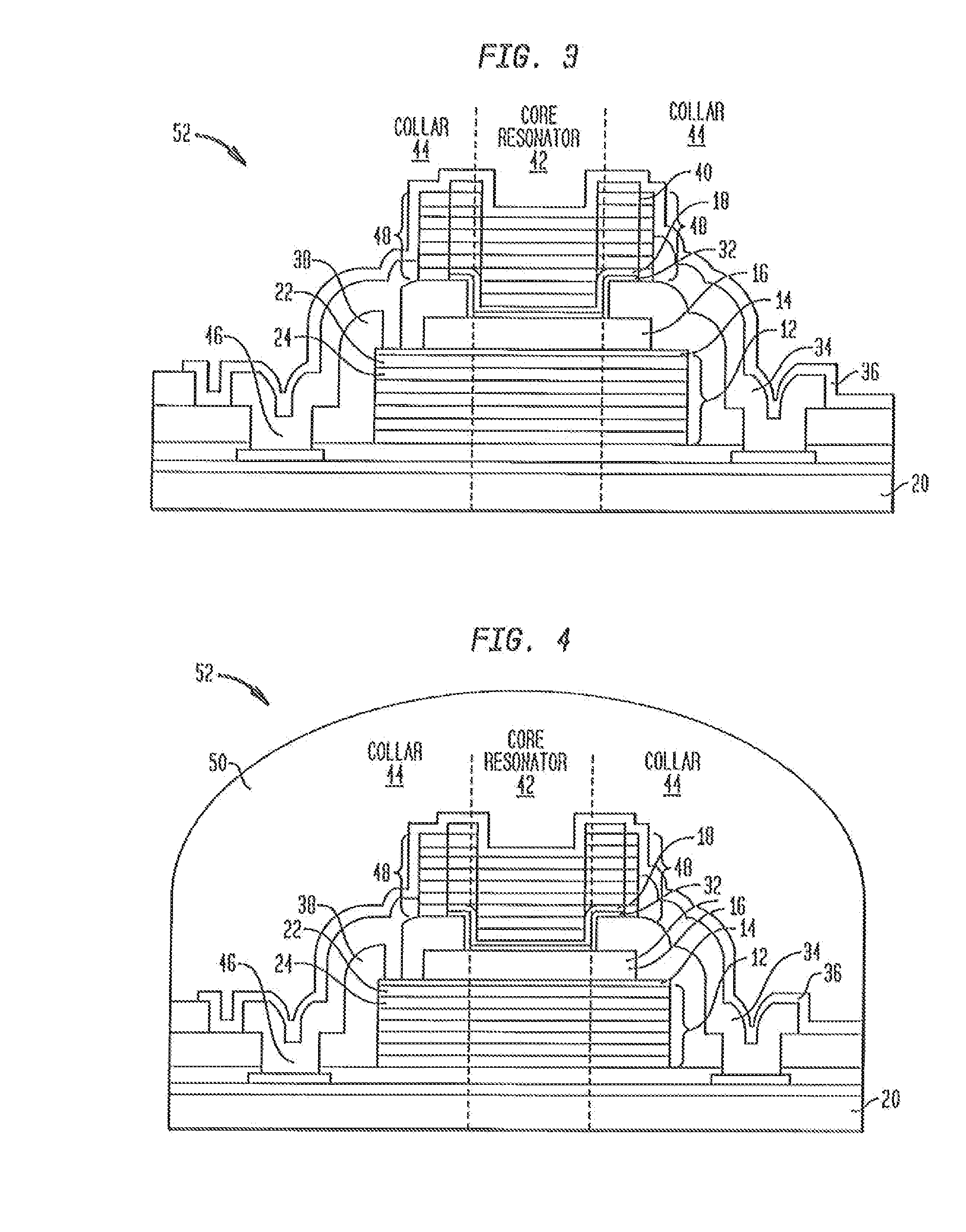Protected resonator
- Summary
- Abstract
- Description
- Claims
- Application Information
AI Technical Summary
Benefits of technology
Problems solved by technology
Method used
Image
Examples
embodiment 66
[0068]For certain applications, stresses originating from the wafer itself are significant enough to justify released (FBAR) structure even though these structures exhibit decreased inertial resistance. FIGS. 10 and 11 illustrate another alternate embodiment 66. The released FBARs have the collar 44 and spacer 38 that protect the core resonator 42. The FBARs are covered with a cap 60 structure as described above for FIG. 9.
[0069]The structures illustrated in FIGS. 10 and 11 are formed as follows. A sacrificial release layer is deposited and patterned such that it remains under the device region 42. On the substrate 20 is formed a temperature compensating layer 32, lower electrode 14, piezoelectric 16 material, and upper electrode 18. The upper electrode 18 is patterned by photolithography and etching. The piezoelectric 16 material, the lower electrode 14, and the temperature compensation layer are all patterned (preferably with the same mask) using photolithography and a sequence of...
embodiment 74
[0075]FIG. 12 is a cross section view of an alternate embodiment 74. This embodiment is an inverted SMR with a core resonator 42, collar 44, both of which are encapsulated under a cap 40 that is constructed as a Bragg reflector. The structure 74 has a lower electrode 14, a piezoelectric 16 layer, and an upper electrode 18. A temperature-compensating layer is optional and not illustrated. The cap 40 formed over the resonator structure consists of an inner protective layer 62 and a seal layer 64. The seal layer 64 is configured as an energy-confining upper Bragg reflector. As previously described such a layer has multiple pairs of layers, each pair having a high acoustic impedance layer 24 and low acoustic impedance layer 22. As described above, each of these materials has a thickness equal to a quarter acoustic wavelength of the operational mode in the material. Individual reflector layers are not shown but illustrated as one monolithic layer 40. As with other embodiments, this embod...
embodiment 266
[0102]Inner resonator structure 252 is protected from external and package stresses by cap structure 360, which forms a cavity 351 around inner resonator structure 252 and provides isolation gaps on all sides of inner resonator structure 252. The cavity 351 is not required to be hermetic. Cap structure 360 comprises substrate 291 and layer 281, which are similar in design, composition, assembly and properties to substrate 291 and layer 281 in embodiment 266.
[0103]Cap structure 360 also comprises substrate 392 which is attached to the upper side of substrate 20. Substrate 392 is preferably made of silicon or borosilicate glass (e.g. Pyrex 7740 from Dow Corning), but it can also be made of fused silica, ceramic material, polymer material (e.g. epoxy), printed-circuit board laminate (e.g. FR-4, BT, Getek), other electronic module substrate material (e.g. LTCC), or other non-conductive or conductive material known to those skilled in the art. Substrate 392 may comprise electrical compon...
PUM
 Login to View More
Login to View More Abstract
Description
Claims
Application Information
 Login to View More
Login to View More - R&D
- Intellectual Property
- Life Sciences
- Materials
- Tech Scout
- Unparalleled Data Quality
- Higher Quality Content
- 60% Fewer Hallucinations
Browse by: Latest US Patents, China's latest patents, Technical Efficacy Thesaurus, Application Domain, Technology Topic, Popular Technical Reports.
© 2025 PatSnap. All rights reserved.Legal|Privacy policy|Modern Slavery Act Transparency Statement|Sitemap|About US| Contact US: help@patsnap.com



